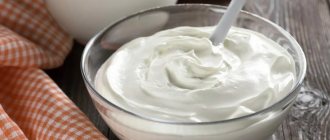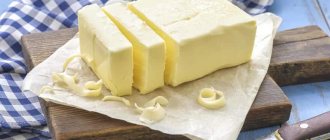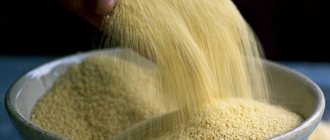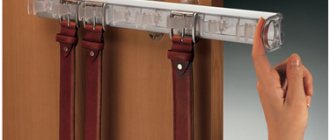Of course, it is preferable to always eat only the freshest food. Greens from the garden contain many vitamins and beneficial elements. Berries collected from the bush bring maximum health benefits. Freshly caught fish and fresh milk have excellent taste. Even in ancient times, nomads had a saying: “Meat should be kept on its feet.” But now most people live in cities and do not have the opportunity to eat from their garden or farm. How to effectively organize food storage?
The best storage method is cold
Nowadays, many special technologies have been developed for long-term food storage: salting and marinating, drying in the sun or in special units, heat treatment or cooling, storage in vacuum containers or special environments that prevent spoilage. However, cold is deservedly considered the most popular way to preserve the taste and nutritional elements of food.
Long-term safe storage at low temperatures and following freezing rules will allow you to eat high-quality food all year round and not depend on the timing of the harvest. How to preserve as much as possible all the nutritional elements of a variety of supplies? What's the best way to package food before freezing? What rules should you know and apply?
Shelf life of food supplies
The shelf life of food products is influenced by the strict adherence to standards for freezing and further storage conditions. According to domestic food standards, shelf life is considered the period of time during which food fully retains its properties in accordance with regulatory documentation. At the end of the shelf life, food products are suitable for eating, but their taste characteristics deteriorate.
The expiration date is considered to be the period after which food cannot be used for its intended purpose. After expiration date, supplies should be disposed of or used for non-food purposes.
Frozen bread and pastries
Whether homemade or store-bought, breads and baked goods can be easily frozen for later enjoyment. Just be sure to cool completely before freezing.
Shelf life of frozen bread
| Frozen bread and pastries | Shelf life in the freezer |
| Bread | 3 months |
| Muffins | 2 months |
| Pancakes and waffles | 1 month |
| Flatbread | 3 months |
| Cookie dough | 6 months |
| Pie or cake crusts | 3 months |
Preparing for freezing
Food must be properly prepared before freezing. First, you need to make sure the quality of vegetables, fruits, meat, fish and other dishes. After all, cold can preserve the taste and nutritional properties of products, but it cannot improve their quality. Rotten potatoes will not stop being rotten after freezing.
Secondly, all products must be thoroughly washed, dried, and cleaned before being placed in the freezer. They should be ready to eat immediately after defrosting.
Thirdly, you should not put hot foods in the refrigerator. First you need to let them cool to room temperature.
Fourthly, you need to take care of the freezer. In order for freezing to be carried out quickly, you should prepare the compartment in advance: empty the zone of the lowest temperatures from the supplies lying in it. About 5 hours before placing new dishes in it, you should turn on the freezing mode. If the freezer does not have such a mode, then you should turn the temperature control knob to maximum cold. This will not only make freezing quick, but will also save already frozen food from unnecessary warming when adding a new portion of food.
User Questions:
Freezer does not freeze food
Most likely the freezer is faulty or not sealed.
Is it possible to turn on the freezer without food?
If the freezer is built into the refrigerator, then it will not be possible to disconnect it separately from all other chambers.
Why does snow form on food in the freezer?
Wet foods in a freezer without a No Frost system will be covered with frost, and in especially old refrigerators, a layer of snow.
What to do if the food in the freezer smells of freon?
Only if you do not have an old Soviet refrigerator, this is not the smell of freon, since it does not smell like a refrigerant. Most likely it is the smell of spoiled food or dirt from food debris on the surfaces of the chamber. Remove any bad-smelling foods, unplug the refrigerator, and clean the inside.
Why doesn't food freeze in the freezer?
Most likely due to a faulty freezer. Or if the food is in it less than the time required for freezing the product, then the product simply has not had time to freeze yet. All freezing times are approximate and may vary from refrigerator to refrigerator.
Food in a broken freezer has gone rotten, how can you remove the smell?
Empty the food first, then wipe down all surfaces with water and hydrogen peroxide. A vinegar solution (8 parts water, 1 part vinegar) can also help. Or use ready-made refrigerator cleaning products.
How to choose an inexpensive, but practical and reliable freezer for your home
Give preference to proven and well-known brands. The recommended freezer volume for a family of 3-4 people is a 200 liter freezer. Choose equipment with favorable energy consumption A+ and A++. If you need additional functions, then select “extra freezing” and the auto temperature preservation mode during a power outage.
Why do food in the freezer become covered with frost?
This may indicate a malfunction of the refrigerator, or the cooling mode is set incorrectly.
Why does food from the freezer smell like a refrigerator?
Frozen foods absorb odors well in a confined space like a freezer, which is why it is so important to store them in vacuum packaging.
Can I store food in the freezer in a glass jar?
Yes, it is quite possible to store liquid and bulk products in glass. The lid should fit tightly and not let air through.
Can I put hot food in the freezer?
No, this may damage the refrigerator.
Why is speed important when freezing?
Freezing food must be done very quickly. During slow freezing, large ice crystals will form from the water, which will begin to tear the tissues of the food. When the food is later thawed, juices will leak from the ruptures, which will lead to a decrease in nutritional value, deterioration in taste and appearance.
In addition, it is worth remembering that if there are any harmful bacteria on a product prepared for freezing, then they will not die in the freezer. At a temperature of -18 Celsius, their vital processes will slow down greatly, and the number of bacteria will not increase. But if the temperature rises (at least to -6 C), many bacteria will be able to multiply. Therefore, the higher the storage temperature, the more likely it is to get low-quality food over a long period of time that can harm your health.
Therefore, to avoid stomach problems, food should be frozen at a temperature of no more than -18C, and should be completely frozen inside, not just on top. The lower the temperature, the faster the food will freeze. Slow freezing or subsequent improper storage will lead to the possible growth of pathogenic bacteria. Eating improperly frozen food can cause significant harm to people's health.
Currently, the recommended freezing conditions are provided by refrigerators and freezers marked with four stars.
If you need high-quality storage of frozen food in large volumes, then you should rent freezer warehouses with low-temperature storage chambers. OJSC Moscow Cold Storage Plant No. 14 provides a full range of warehouse services. Refrigerated warehouses are available for rent for storing dairy products, sausages, and eggs. And if the volume of goods is small, then you can use the service of responsible food storage.
Broth and leftover sauce
Broth – in the freezer?! Yes, yes, don’t be surprised - a considerable number of housewives around the world do this.
If you need to store meat or vegetable broth for more than a week, do the following: take fresh broth, cool it, and then pour it into containers.
The best option would be glass or ceramic dishes. We do not recommend keeping it in a metal pan, especially one that is not enameled: there is a risk that the metal will form oxides.
Some housewives use ice trays when freezing and then place the resulting cubes in plastic bags. This option is convenient if you don’t have a large freezer or space in it.
After freezing, the product will survive six months of storage without complications. After this period, it would be better to throw it away.
Ice cube trays are also great for freezing and storing leftover tomato sauce, pumpkin puree and other runny foods.
Reason to put broth in the freezer: Broth is rich in nutrients and is great for feeding not only people, but also bacteria. In other words, it spoils very quickly, much like fresh meat. Therefore, if for some reason you need to store a certain amount of this product for a longer period, you should take our advice.
Serving Size
The speed at which food is frozen is affected not only by temperature, but also by portion size. At home, it is better to freeze food in small portions - ones that can be eaten at one time. The thinner the portion, the sooner it will freeze to its full depth. For example, the recommended temperature for freezing melon is -24 degrees Celsius. If you put a whole large melon in a freezer at this temperature, its middle may rot before it has time to freeze. And if the fruit is cut into thin slices, then each of them will retain its taste and nutritional qualities.
It is better if the thickness of the briquette with products does not exceed 4 cm. As a rule, a briquette 2 cm thick completely freezes twice as fast as a 4 cm briquette. For example, meat or fish in a “thin” briquette will freeze in 2-3 hours, and in a “thick” briquette - in 4-6 hours. Fruits or berries – in 3.5-4 hours or 8-10 hours, respectively. Vegetables or mushrooms - 4-4.5 hours or 11-12 hours.
It is advisable to place briquettes in the freezing chamber not horizontally, but vertically, leaving a small gap for air circulation. This way they will freeze much faster. If you stack the products one on top of the other, you may not get any benefit in freezing speed compared to a whole, uncut piece.
When should you put nuts, bananas or even boiled rice in the freezer?
The freezer is a place where you can put not only semi-finished products, ice cream, fish or meat. The freezer in your refrigerator is actually the most important “tool” for keeping all types of food fresh. It’s just that some of them are not usually placed in a department with sub-zero temperatures. But in vain! After all, products, be it bread, butter or any type of nuts, etc., are best kept frozen.
We will give you the top 7 products, but you can use the same advice to create your own list of products.
What to pack supplies in
Portions for freezing must be packaged in hermetically sealed bags. This will help avoid drying out that occurs at low temperatures and mixing odors from different foods. It is especially important to observe this rule for freezers with forced air circulation.
You should try to select the shape of the package so that it can be conveniently placed in the freezer. When freezing irregularly shaped foods (for example, a whole chicken carcass), you can replace the bag with aluminum food foil. In this case, it must be pressed tightly against the product and excess air must be released. When freezing liquid foods, remember that they expand when frozen. Therefore, you need to leave a little free space in the package.
The packaging must be sealed. You can use special freezer bags or regular plastic bags, but the latter must be tied tightly with a plastic cord. It is advisable to seal the lids of storage containers with a special tape, which can freeze to the jar and prevent air from getting inside.
If you store a variety of foods in the freezer, it is advisable to make notes on the packaging. This will allow you to use the food in a timely manner and avoid overstaying. There are several ways to mark briquettes with products:
- Label the bags with the name of the product and the date of freezing or the date by which the food should be used. Labels can be cut out of cardboard or plain paper, or you can purchase special cards that are frozen to the bags.
- Sign the package with a marker. It is better not to use pencils, as the inscriptions made with them are easily erased.
- To easily identify frozen food, you can mark the packages with different colors. For example, use blue for fish products, pink for poultry and meat, green for vegetables, and yellow for fruits.
- It may be worth hanging a notepad on the refrigerator and marking the location of food supplies on it. In addition, some models of modern freezers have a special slider that can be moved and thus make notes.
Transition from freezing to storage
For refrigerators with one compressor, when freezing, the temperature control of the refrigerator compartment should be moved to minimum. If you don't do this, you may accidentally freeze fresh food. Usually, after the end of freezing, the freezer automatically switches to normal mode, and the refrigerator compartment has to be switched manually. In refrigerators with two compressors, the transition from freezing mode will be performed automatically.
If the freezer compartment is large, freezing is carried out in special compartments with the lowest temperatures. Therefore, after freezing is completed, it is advisable to transfer the products to other areas intended for long-term storage.
Where are the cold zones located in the refrigerator?
Modern refrigerator models are equipped with control and execution electronics, in particular displays. The numbers on the display indicate the average temperature of the entire refrigerator compartment. In fact, the temperature will differ by several degrees in different zones. The lowest temperature will always be on the shelf closest to the freezer (if the freezer is located at the top), on the lowest shelf (if the freezer is located at the bottom) and near the back wall of the refrigerator.
With a bottom-mounted freezer compartment or several compartments at +4°C, the display shows the distribution of temperature zones in the refrigerator compartment as follows:
- On the bottom shelf – temperature within 0°C/+3°C;
- At the next level – from +3°C to +4°C;
- On the middle shelf it will be about +4°C;
- On the highest tier – in the range of +4°C/+6°C.
These are the arithmetic averages of the zonal temperature in the refrigerator. The more often the refrigerator door is opened, the higher the temperature in the compartment will be due to faster, and forced, heating of the internal space.
Important
In refrigerators with a drip system, the temperature near the back wall is 3-6 degrees lower. In No Frost systems there is no such difference. If the refrigerator is not equipped with door ventilation, its shelves will be 5-10 degrees warmer than the average compartment.
Meat and poultry
Before freezing, it is better to cut the meat into small pieces suitable for portion use. Excess fat should be cut out. It is better to separate small portions (steaks, cutlets, chops, minced meat, etc.) with parchment paper or cellophane pads to prevent freezing.
If you need to freeze whole bird carcasses, they must be gutted before the procedure. This is due to the fact that the shelf life of the entrails is less than the shelf life of the meat. For the same reason, it is not advisable to stuff carcasses prepared for freezing.
It is ideal to freeze pork and veal as steam, immediately after slaughter. It is better to let beef ripen for four or five days; lamb should be frozen after six days of storage at a temperature of about 5 C. At the same temperature, it is worth keeping game, rabbit and poultry for two to three days.
The estimated shelf life for goose, duck, and rabbit meat is six months, for chicken, turkey, venison and game – nine months. Minced meat and sausages made from it can be stored for two months, liver for three months, lamb and pork products for six months, veal for eight months, and beef for up to ten months. A variety of home-cooked meat dishes can be kept in the freezer for three to four months, and industrially prepared meat food can be kept in the freezer for up to one year.
Storing dough products
There are the following categories of such products:
- Dough that has been frozen at the manufacturer's factory. It can be of various types, including puff pastry or curd.
- Stores sometimes have their own cookeries or bakeries. The dough they make is offered frozen to customers.
- Some products contain dough parts. Examples of such products are dumplings and dumplings. They are usually blast frozen before sale.
For refrigerated (t from 0°C to -6°C) dough products, the shelf life is no more than 72 hours.
At a temperature of -18°C, frozen products can be stored longer - for 2 months.
If your refrigerator can provide a temperature of -24°C, then the shelf life can be up to 9 months.
The specified shelf life of semi-finished products is observed in most cases. Sometimes it happens that the manufacturer claims significantly longer terms. For example, some dumpling manufacturers guarantee storage for 6 months. In such situations, it is necessary to carefully study the composition of the product. Usually, this is due to the addition of a large number of preservatives, which can be harmful to your health.
Fish
In order to preserve the taste of the fish, it is advisable to freeze it within three hours after catching. Large fish should be cut into small pieces and separated with greaseproof paper. It is better to boil crabs, shrimp or crayfish, cool, and then freeze.
Small fish can be frozen. To do this, you should put it in the freezer for two or three hours, then take it out, dip it in cold water for a few seconds and place it back in the chamber.
Fish can be stored for two to six months, and crayfish and crabs for two to three months. Home-produced fish dishes can be frozen for three or four months, while commercially produced fish dishes can be frozen for up to nine months.
Butter
Almost all butter can be frozen.
Frozen butter is a baker's best friend. You definitely need an ice-cold stick of butter for baking cookies and pies. In a pinch, it can be grated and used just like regular temperature butter in everyday recipes. see also
Products that should not be put in the refrigerator: 23 items
And so that you always have soft butter, buy several pieces. Store two or three in the freezer, and put the piece you use in the refrigerator. There it will thaw and it will be more convenient to use.
Reason to put butter in the freezer: Keeping it frozen will keep it fresh longer. This means that you can buy oil in bulk at a lower price and save money.
Vegetables and mushrooms
It is best to freeze vegetables two to three hours after harvesting. They must be washed and, if necessary, cut into small pieces. You can blanch the vegetables in boiling water or simply dip them in boiling salted water for a few seconds (1 teaspoon of salt per 1 liter of water), cool under tap water, dry, portion out and put in the freezer.
You should not freeze vegetables with a lot of moisture (for example, cucumbers) and leaf salads. You can store frozen vegetables from six months to a year.
It is best to freeze mushrooms immediately after picking. They can be stored for six months.
Berries and fruits
Washed and dried berries can be frozen in bags. It is best if the briquette thickness is two to three centimeters.
Sometimes it is worth adding sugar to small fruits or berries. Then the fruits can be placed in a shallow tray, allowed to freeze, and then placed in bags. Berries in sugar will remain firm and are perfect for eating frozen.
It is better to freeze pieces of fruit (melon, peaches and others) in syrup. To prepare it, you need to stir 300 grams of sugar in a liter of water. This amount is enough for 2 kg of fruit. Just remember to leave some space in the freezer bag, as the syrup will expand as it cools. You can prepare fruit puree in the same way.
It is recommended to consume frozen berries/fruits within one year.
Freezing food is one of the most effective ways to preserve its taste and nutritional properties. But the taste and appearance of the prepared food will also be affected by the defrosting process. The most effective methods are: preliminary defrosting in the refrigerator and rapid defrosting in the microwave. How to defrost food?
The importance of freezing time
Food must be frozen quickly. This is due to the properties of water, which when frozen turns into ice crystals. The crystals expand. And since moisture is contained in any food product, slow crystallization of water leads to tissue rupture, and as a result, to the loss of microelements, vitamins and deterioration of taste.
The faster the product is frozen, the smaller the ice crystals. Accordingly, quick-frozen products retain much more beneficial properties, and their taste does not change after defrosting. In addition, rapid freezing contributes to the death of bacteria that may be on the surface of goods. That's why blast freezers are popular today. This is special equipment that allows you to freeze food as quickly as possible at extremely low temperatures.
Animal products
Dairy supplies defrost in the refrigerator for about four to five hours, and at room temperature - two to three hours.
It is better to start defrosting the fish two or three hours before cooking in a package at room temperature. In the refrigerator it needs to be defrosted according to the time: three hours for every half a kilo of supplies.
Meat and poultry can be defrosted in several ways:
- At room temperature. Defrosting a piece to a depth of one centimeter occurs in about two hours.
- In the refrigerator compartment. Defrosting a piece to a depth of one centimeter occurs in three to four hours. Or you can expect that for every pound of meat it takes five hours to completely defrost.
- In the oven. Defrosting a piece to a depth of one centimeter at a temperature of 50 C occurs in about half an hour.
- In the microwave. With this defrosting, the meat will warm up evenly in volume, and the defrosting time will be an order of magnitude shorter. However, the exact time depends on the characteristics of the microwave.
- In hot water. It is better to never use this method, since juices along with nutrients will be washed out of the meat/poultry.
You can cook meat (except pork) over low heat without defrosting by increasing the cooking time. Quick-frozen semi-finished meat products can be simultaneously defrosted and reheated in the oven at a temperature of 150-220 C or on a gas / electric stove. Portioned meat or poultry can be cooked immediately in the usual way, spending a little more time on bringing the food to readiness.
What determines the temperature in the refrigerator and freezer?
Any refrigerator model operates in the temperature range from 0°C to +8°C. In this case, the arithmetic mean value of the temperature depends on:
- How often the refrigerator door is opened;
- From filling the refrigerator compartment;
- From summer or winter working conditions.
The temperature in the freezer depends on the manufacturer, this parameter is indicated by asterisks on the panel:
- * -6°C/-12°C;
- ** -12°C/-18°C;
- *** -18°C/-24°C;
- **** -24°C or less.
Attention: manufacturers of refrigeration equipment mainly produce units with a temperature in the refrigerator compartment of +2°C/+4°C, in the freezer –18°C-24°C.
Products of plant origin
Frozen vegetables can be cooked without thawing. This will increase the cooking time by about a third. If the vegetables were blanched before freezing, their cooking time will be even shorter. It should be remembered that when cooking quick-frozen vegetables, less vitamins are lost than when cooked. However, you should not cook vegetables for a long time: they will lose not only their nutritional value, but also their taste, freshness, and aroma.
Fruits/berries can also be cooked immediately without defrosting, but it is worth remembering that many of them will lose their shape.
Fruits, berries and vegetables, like meat, can be defrosted in different ways:
- At room temperature. A kilogram of vegetables will defrost in three to four hours, and fruits and berries in about five hours.
- In a refrigerator. To defrost a kilogram of vegetables it will take about ten hours, for berries and fruits – 12-15 hours.
- In the microwave. A kilogram of fruits, berries or vegetables can be defrosted in just a few minutes, depending on the characteristics of the oven.
- In hot water. Vegetables, berries, fruits that will be eaten raw after defrosting can be placed in hot running water or a container with hot water. But you need to put them there in packaging, otherwise the amount of nutrients in the products will decrease.
Both vegetables and fruits should be thawed only before consumption. If they sit for a long time after defrosting, they may become softer and darken.











